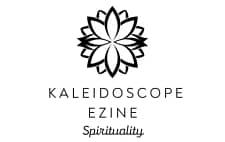Tarot cards have intrigued and mystified people for centuries. Often associated with fortune-telling and divination, these beautiful cards have a deeper purpose – one that goes beyond predicting the future. Tarot can be a powerful tool for self-reflection and healing. In this blog, we will delve into the art of using tarot for self-discovery and personal growth.
Understanding Tarot: A Brief Introduction
Before we explore how to use tarot for self-reflection and healing, it’s essential to have a foundational understanding of what tarot is and how it works.
What is a Tarot?
Tarot is a deck of 78 cards, typically divided into two parts: the Major Arcana and the Minor Arcana. Each card carries its unique symbolism, meaning, and energy. The Major Arcana consists of 22 cards, while the Minor Arcana is divided into four suits: Wands, Cups, Swords, and Pentacles.
How Does Tarot Work?
Tarot cards are used as a tool for gaining insight into various aspects of life. A reader or querent (the person seeking guidance) shuffles the cards and draws a specific number of cards, usually in a spread or pattern. These cards are then interpreted based on their symbolism and the reader’s intuition to provide guidance, clarity, and insight.
Now that we have a basic understanding of tarot, let’s explore how to use tarot for self-reflection and healing.
Tarot for Self-Reflection
Connecting with Your Inner Self
Tarot cards can be a mirror to your inner self, reflecting your thoughts, emotions, and energies. When used for self-reflection, tarot helps you connect with your subconscious mind, providing a deeper understanding of your inner workings.
Steps for Self-Reflection with Tarot
- 1. Select a Quiet Space: Find a peaceful environment where you won’t be disturbed. Light a candle or incense if it helps create a calming atmosphere.
- 2. Shuffle the Cards: Begin by shuffling the tarot deck while concentrating on your question or the aspect of yourself you want to explore.
- 3. Draw a Card: Draw a single card, asking a question or simply seeking insight into your current state of mind.
- 4. Reflect and Journal: Take a few moments to meditate on the card’s symbolism and how it relates to your question or feelings. Then, journal your thoughts and emotions.
- 5. Repeat if Needed: If you have more questions or areas to explore, repeat the process.
Benefits of Tarot for Self-Reflection
- Clarity: Tarot cards can provide clarity on situations and emotions you might be confused about.
- Emotional Healing: By confronting your emotions and thoughts, you can start the process of emotional healing.
- Self-Awareness: Tarot helps you become more self-aware, which is essential for personal growth.
Tarot for Healing
Healing Through Self-Discovery
Self-discovery is a key component of healing. Understanding your emotions, beliefs, and past experiences can help you heal from emotional wounds and traumas. Tarot can be a gentle yet powerful guide on this journey.

Healing Your Emotional Wounds with Tarot
- Identify Your Emotional Wounds: Use tarot to explore past experiences and emotions that may have caused wounds or trauma.
- Seek Guidance: Ask the cards for guidance on how to heal and move forward. Draw cards that represent actions or mindsets that can aid your healing process.
- Daily Draws: Make a habit of drawing a daily card to check in with your emotions and progress.
- Visualization: Use tarot cards to aid in visualization exercises, which can be particularly effective in the healing process.
Healing Rituals with Tarot
- Candle Magic: Combine tarot readings with candle magic for a more profound healing experience. Choose a candle color and tarot cards that align with your healing intentions.
- Meditation and Affirmations: Incorporate tarot cards into your meditation and affirmation routines. Let the symbolism of the cards guide your thoughts and affirmations.
- Crystal Healing: Pair tarot readings with crystal healing. Select crystals that resonate with the energy of your tarot cards and intentions.
Common Tarot Cards for Self-Reflection and Healing
While all tarot cards have the potential for self-reflection and healing, certain cards are often associated with these processes due to their profound symbolism. Here are a few such cards:
The Hermit (Major Arcana)
The Hermit card represents introspection and inner guidance. It encourages you to withdraw from the external world and seek answers within yourself. Use The Hermit when you need to explore your inner wisdom and find solutions to your problems.
The Moon (Major Arcana)
The Moon card represents the subconscious mind and illusions. It encourages you to confront your fears and uncertainties. Use The Moon when you want to uncover hidden emotions and deal with deep-seated issues.
Ace of Cups (Minor Arcana)
The Ace of Cups is associated with emotional healing, love, and new beginnings. It signifies the potential for emotional renewal and deep connections with others. Draw this card when you seek to heal emotional wounds or mend relationships.
Ten of Swords (Minor Arcana)
The Ten of Swords might seem like a card of doom, but it also represents hitting rock bottom and starting anew. Use this card when you want to acknowledge the pain you’ve experienced and begin the healing process.
Tips for Effective Tarot Readings
Whether you’re using tarot for self-reflection or healing, these tips can help you get the most out of your readings:
Maintain a Positive Mindset
Approach your tarot readings with an open and positive mindset. Embrace the insights, whether they are what you were hoping for or not.
Trust Your Intuition
While understanding the traditional meanings of tarot cards is valuable, trust your intuition when interpreting the cards. Your inner wisdom often knows best.
Keep a Tarot Journal
Maintain a tarot journal to record your readings, thoughts, and emotions. This journal can be a valuable resource for tracking your progress and seeing patterns over time.
Stay Consistent
Make tarot a regular practice, whether it’s daily draws or weekly reflections. Consistency will yield more significant insights and growth.
Seek Support if Needed
If you’re dealing with deep emotional wounds or trauma, consider seeking support from a therapist or counselor in addition to using tarot as a supplementary healing tool.
Tarot as a Personal Growth Journey
Using tarot for self-reflection and healing is not just about predicting the future or seeking guidance from external sources. It’s about embarking on a journey of self-discovery, personal growth, and emotional healing. Through the symbolism and intuition that tarot cards offer, you can gain deeper insights into your emotions and life experiences, ultimately leading to a more fulfilling and balanced life.
Incorporate tarot into your daily or weekly routine and watch as it becomes a powerful tool for self-reflection and healing. As you explore the cards and their meanings, you’ll uncover the wisdom within yourself, enabling you to heal, grow, and create a brighter future.
So, pick up your tarot deck, find a quiet space, and let the cards guide you on your path of self-reflection and healing. The journey begins with the first draw, and it’s a journey of self-discovery that can last a lifetime.


